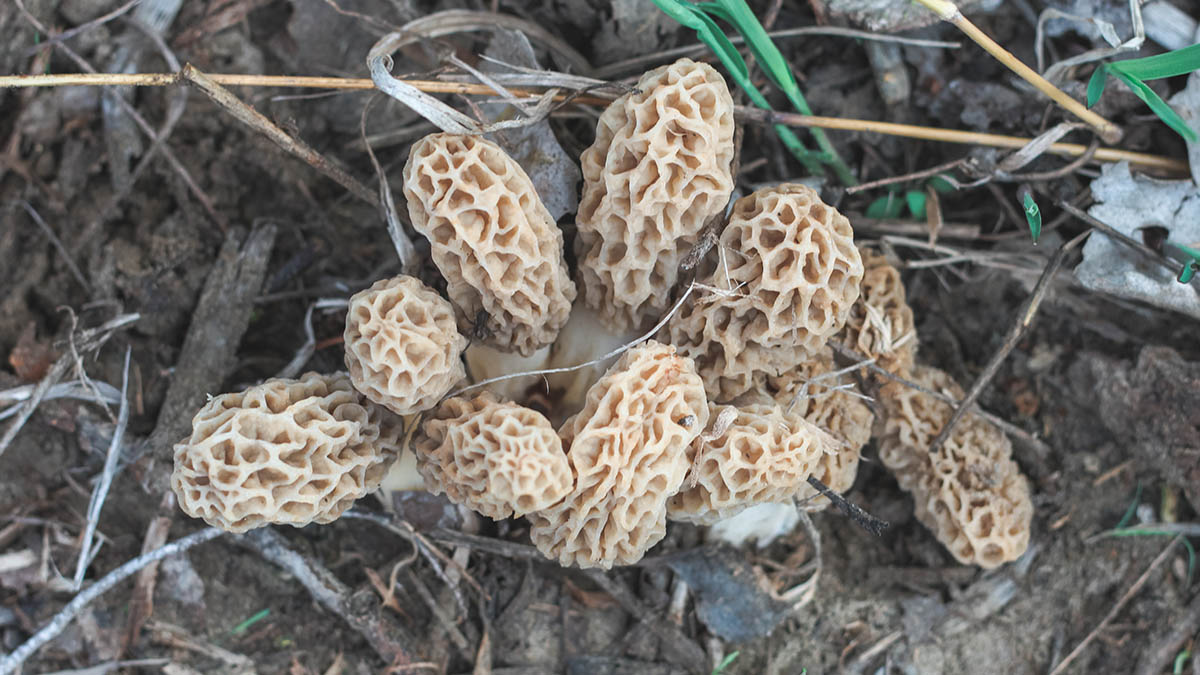
I’ve had strangers offer up onX pins for where to find roosted turkeys and spawning walleye, but rarely do foragers volunteer morel mushroom spots. Like a good family recipe or secret bait, a lot of morel honey holes go to the grave with whomever found them. Since no one is going to walk you into a big patch of the finest tasting mushies, you’ll need to find spots on your own.
While the absolute best place to pick morels this spring is the same place you picked morels last spring, even that’s not a guarantee. If you want to expand your morel mushroom hunting rolodex, focus your search on these locations.
Burn Areas
Wildfire morel growths are maybe the worst-kept foraging secret. Everyone west of the Missouri River knows these are prime locations to find mushrooms, but few outside of this region give them consideration—and that’s just wrong.
Wildfires in the South aren’t all that frequent anymore, but there are still plenty of low-intensity, prescribed grass burns. Fresh grass fires (and those that are a few seasons old) along wooded areas or waterways will absolutely produce easy-to-find morels. You’ll see the same thing in the Northeast, Midwest, and Great Plains after farmers torch ditches in the spring to clear out old plant matter.
There’s a reason commercial foragers love burn morels so much: they’re easy to spot and uncharacteristically predictable. While flatlanders won’t find the same quantity that Westerners enjoy, they’ll still be able to fill a sauté pan off scorched earth morels.
Vegetated Islands
The same thing that allows burn areas to produce morels applies to vegetated sandbars: the presence of disturbed, enriched soil. Islands and bottomlands that see irregular flooding are constantly revitalized with fresh nutrients, which causes long-dormant spores to come to life.
Vegetated sandbars are some of my favorite places to kill spring days looking for morels. Unlike the river bottoms, which are often easy to access, islands that require a boat to reach will leave behind much of the foraging competition. But not all islands are created equal.
If you can find a lush island that transitions from rush grass to hardwoods, then you’re in business. Size doesn’t much matter, as I’ve had bountiful harvests on sandbars as small as 2 acres to as big as 700. In early spring, focus on sandier, sparser areas. As the season progresses, move towards the middle of the island to find morels in darker soils and denser vegetation.
Fallen Trees
As I discussed in my total guide to morel hunting, dead, tipped-over trees are my mushroom hunting slump busters. Whenever a day of foraging isn’t going as planned, it seems like things always turn around when I find a fallen tree.
There’s something about the disturbed soil, dead bark acting as mulch, and little bit of shade that the trunk provides that makes morels appear. Trees that have fallen in the last year are best, but even those that are completely stripped of bark and have seen a few winters will still produce. Brush up on your mycology for spots like this as you’ll often find other choice edibles here, like oysters and chicken of the woods.
While there are no sure things in mushroom hunting, dead timber is as close as it gets. Seek out areas like this, as well as burns and islands, and you’re (almost) guaranteed to have a successful foraging season.





Conversation